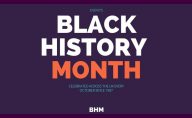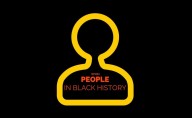Africa, Slavery and Business
A brief overview of the companies, slave traders and royal connections involved in the slave trade from Africa.
For two hundred years, 1440-1640, Portugal had a monopoly on the export of slaves from Africa. By the 1500’s, The Dutch were leading the way, they had fought off Spanish Rule in 1576, and by 1602 the Dutch East India Company (Vereenigde Oostindische Compagnie) was founded, lasting until 1796. They were trading spices, cloths and other goods, around the world. The English and the Dutch would come head to head in the spice trade in South East Asia. The Spanish had claimed the ‘New World’ and had become increasingly dependent on gold and silver.
Britain was about to start ship building and chartering voyages at a great rate. During the 16th century, Europe began to outpace the Arab world in the export traffic, with its slave traffic from Africa. British involvement in the slave trade developed after 1650, increasing with the demand for sugar. By the end of the 17th century, England led the world in Naval shipping and the trafficking of slaves, and the financial well-being of Britain’s colonies, navy and merchant shipping industry became dependent on the slave trade via the The Middle Passage.
Royal Connection
Britain’s Royal connection to the slave trade dates back to 1564. Slave trader John Hawkins was given an armed ship ‘The Jesus’ by Queen Elizabeth I. The Queen received her share of the profits and Hawkins was given a knighthood, and he was given more ships for his future slave trading voyages.
In 1660, King Charles II, the restored Stuart monarch, established the Royal Adventurers, a company given a 1,000 year monopoly to trade on the Guinea Coast (West Africa), mainly in slaves, but also in gold and ivory.
The Royal Africa Company went on to take its place, also given monopoly with the King and his brother, the Duke of York, as shareholders. This monopoly lasted until 1698, during which it has been estimated that 90,000 slaves were ‘exported’ to America.
The Duke of Clarence, son of King George III was, in the House of Lords, Pro – Slavery’s most prominent spokesman in the late 18th century.
The Earl of Harewood of Harewood House in Leeds, is a cousin to the Queen of England, and his ancestors, the Lascelles family, amassed great wealth from slave trading and slave-related money lending and slave plantations in the Caribbean. It was this wealth that financed Harewood house in 1772.
Slave Trade Companies
Chartered companies were generally formed and legitimised under a royal or an equivalent government charter. Chartered companies sought government sponsorship and protection for their efforts to colonize new areas or open new trade routes. The best known examples are the Dutch East India Company and the British East India Company. Governments took an active role in order to receive profits, and expand to new territory.
1618 The Guinea Company The Guinea Company ‘Company of adventurers of London trading to the ports of Africa’ was incorporated and became the first private company to colonize Africa for profit. It was re charted and given a 31 year monopoly on all trade with West Africa.
1553 – 1901
Tudors
- 1553-1558 Mary I
- 1558-1603 Elizabeth I
Stuarts
- 1603-1625 James I
- 1625-1649 Charles I
Commonwealth
- 1649-1658 Oliver Cromwell
- 1658-1659 Richard Cromwell
Stuarts (restored)
- 1660-1685 Charles II
- 1685-1688 James II
- 1689-1702 William III
- 1689-1694 Mary II
- 1702-1714 Anne
House of Hanover
- 1714-1727 George I
- 1727-1760 George II
- 1760-1820 George III
- 1820-1830 George IV
- 1830-1837 William IV
- 1837-1901 Victoria
Company of Royal Adventurers Trading to Africa was created 1660, and re-founded in 1663, by Prince Rupert and James, Duke of York, to meet the colonists’ labour needs. King Charles II encouraged the expansion of the slave trade, by granting a charter, and investing private funds. It collapsed in 1667.
The Royal African Company was a slaving company set up in 1672 by the Stuart family and London merchants. It was the first major English slaving company based in London. The company helped in the establishment of trading posts on the West African coast. The letters DY were branded on the captives. DY stood for the Duke of York, who was then owner, and would later become King. The new company was dominated by merchants rather than courtiers, though James, Duke of York (and later as King) remained titular Governor. (Click here for a list of Trustees and Members of the New Royal African Company. )
Between 1672 and 1689 it transported around 100,000 slaves. Its profits were increasing and so was the financial power of those in control. In 1698, the company lost its monopoly of the slave trade, and allowed all English merchants into the trade. The number of slaves transported on English ships then increased dramatically. The company was dissolved in 1752.
Kings and African Slave trade
The slave trade was the economic basis of African states like Oyo, Dahomey, Benin and Asante and Zanzibar. Before the arrival of the Europeans in the 16th century, the majority of slaves were exported from Zanzibar East Africa which was an important centre for the Arab slave trade. Following the overland slave caravan routes across the Sahara from the Sahel to Slave Markets in North Africa and the Arabian peninsula.
With increasing European presence, competition and rivalry among European traders grew in particular for the right of acquiring slaves from their African and Arab agents. But as the demand for slaves rose, tribal wars and inland raids became the main source of supply.
The Kingdom of Dahomey, Abomey (Allada, and Whydah were its provinces) one of West Africa’s principal slave states was situated in modern day Benin. The kingdom was founded in the 17th century and survived until the late 19th century, when it was conquered by the French and incorporated into France’s West African colonies.
In the early 18th century, Kings of Dahomey played an active part in the slave trade. The Bight of Benin was the second largest exporter of captives, after West Central Africa. African monarchs along the Slave Coast, the Pepper Coast, Ivory Coast and Guinea Coast of West Africa amassed fortunes selling slaves to European dealers.
King Tegbesu the sixth King of Dahomey was by the 1750’s, estimated to have a slave-based annual income of £250,000. His son, Kpengla, was responsible for expanding the empire into what is currently Togo, and waging war on those who would interfere with Dahomeys stronghold on the slave trade.
Kings of Dahomey
1620 – 1894
- ????-1620 Gangnihessou
- 1620-1645 Dakodonou
- 1645-1685 Houegbadja
- 1685-1708 Akaba
- 1649-1658 Agadja
- 1732-1774 Tegbessou
- 1774-1789 Kpengla
- 1789-1797 Agonglo
- 1797-1818 Adandozan
- 1818-1856 Gezo
- 1856-1889 Glele
- 1889-1894 Behanzin
King Gezo (Ghezo) of Dahomey (1818-1858) He is famous for taking the kingdom to its highest point of its power and fame, his bloodthirsty reputation, and his women warriors, which he used in wars over the slave trade, between Dahomey and Egba (Yoruba Nation). After about 1840, as Britain had put an end to the overseas slave trade, Gezo turned to palm oil exports, and slaves, would now remain to work palm plantations. Palm oil was much less lucrative than slaves, and the economy began to crumble during King Glele’s reign (1858–89).
By the time King Behanzin (1889–94) came to power, hostilities were running high. In 1892 the French Colonel Alfred-Amédée Dodds defeated the Kingdom of Dahomey and King Behanzin was deported to the West Indies.
Useful links and resources
“Sir John Hawkins.” Encyclopedia of World Biography
Documentary Liverpool A Legacy of British Imperial Slave Trade.
English business of Slavery by Dan byrnes
Abomey Historical Museum in Benin
Watch the documentary Slave Kingdoms part 2 Dahomey and Ouidah.
Read more about the Dahomey’s Women Warriors the female soldiers fought and died to expand the borders of their West African kingdom
Encyclopaedia Britannica history of Benin
Encyclopaedia Britannica kingdom of Dohamey



